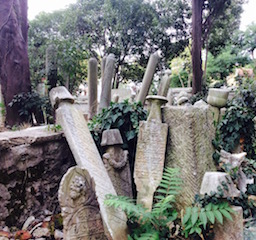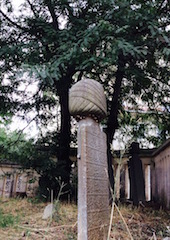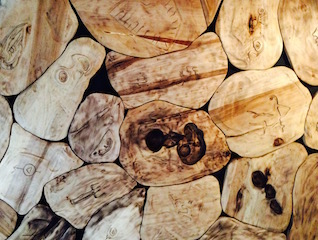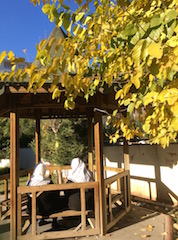(English below)![]() |
| Bunlardan biri olmaya çalışıyorum aslında |
Birkaç yıl önce, eşimin kuzeni bir sunucu olarak Istanbulun radyo kanallarından birinde bir gece programı yapıyordu. Bir akşam, saat 11de, sırf zevk için ben onun konuğu oldum. Temamız ‘Bir yabancının gözünden Istanbul!’ Şarkılar arasında dinleyiciler aklarına gelen her hangi bir soru sormaya davet ettik. ‘Eveeet arayın konuşalalım, konuşalım arayıııın!’ İlk sorulan soru şuydu: ‘Türkiye’nin nesine alışmak en zor geliyor size?’ Mutlaka ‘kellepaça!’ yada ‘kokoreç’ söylememı bekliyormuştur ama cevabım şimdi de o zamandakiyle aynı: Alışveriş gittiğimde her yerde aynı çocuk eleman olarak çalışıyor. Ne tür dukkan olsa olsun, neyi satarlarsa satsınlar, ama hep aynı jöleli saçlı, sağ elinde cep telefon, sol elinde sigara, siyah deri ceketi giyen kirli sakallı delikanlı kapı da kıpır kıpır müsterileri karşılıyor. İstisnasız!
Işimizi kolaylaştırmak için böyle bir çocuğa ‘Burak’ diyelim, zira Türkiye’deki ilk öğrettiğim sınıfımda bu tipe benzer bir ‘Burak’ vardı. Neyse bu Burak tipi bana her şey ama herşey satmış oldu--balı, vesika fotoğraflarını, tabakları, ekmeği, ve oyuncakları da. Evimizin karşısındaki çiçekci? Burak. Deri ceketin altında gömlek düğmeleri karnına kadar açık ama çok nazik, zarif bir buket yapabilir. Bir gün eşimin sütyeni alması lazım diye bir iş çamaşır dukkanına daldik, tabii ki Burak kasadaydı. Amerika’da olsaydık böyle bir tipin bir sütyen satmasını görseydim hemen polis çağırdım çünkü, emin olun ki, ya timarhane yeni kaçan bir sapık olurdu ya toplumun güvenliği için bir timarhaneye gitmesi lazım olurdu.
Bir Burak’ı görünce hemen Asi Gençlik filminde James Dean’ın oynadığı serseri ‘Jim Stark’ aklıma geliyor. Kılık kıyafet aynı zaten. Jim bir sahnede kasabanın en vahşi zorbayla dalaşıyor, herifin boğazına bir bıçak dayanıyor ve karnından yarayacağını tehdit ediyor. Böyle bir serseriden eşinizin iç çamaşırı alınır mı? Ama Türkiye’de aynı tipin dün bir pastane’de çalıştığını gördüm. Hatta ondan bir uğur böceğinin şeklinde çok şirin bir kek aldım. Bir de o yapmış.
‘Dilimleyelim mi?’
‘Yoooo kardesim, kesmeniz gerek yok. Merak etmeyin, biz evde yaparız. Bıçak yer de birakın, ne olur?’
Amerika’dan getirdiğim şuursuz kanaatimin yüzünden,her böyle siyah deri ceketli sigara içen çocuğu gördüğüm zaman, tepkisel olarak cuzdanım halen cebimde olup olmadığını kontrol ederek, adımlarımı hızlandırıp kaçıyorum. Yani, bu ülkede alişverişi bir türlü halledemem.
Birinin giyim kuşamı resmen sinyal, yani subliminal mesajları yayıyor ve bu mesajlar bilinç altında bir otomatik tepki uyandırıyor. Üstelik kültürünüze göre aynı giysının farklı mesajı verebilir.
Mesela, bıyıklar.
Türkiye’de bir bıyık maço sembol olarak kabul ediliyor—neden olmasın? Bir iki istisna hariç (örneğin beş sene önce çalıştığım okulun sosyal öğretmeni) kadınlar doğru dürüstce gür bir bıyığı beceremezler. Ayrıca, Türkiye’de bir bıyık bir erkeğin siyasal kimliğini bile tespit edebiliyor. Başbakan gibi dar ve biraz Şarlo’nun oynadığı karakteri ‘Büyük Dikatör’ü anımsatan bir bıyığınız varsa, AKPlisiniz, belki de kendinizi liberal muhafazakarlardan biri olarak tanımlıyorsunuz. Dudaklarınızı gizleyen tropikal ormanı gibi pos bıyığınız var mı? Solcusunuz, Kürt bile olabilirsiniz. Barış Mançovari sarkık bir bıyığınız varsa, kesinlikle bir milliyetçisiniz, belki MHP’ye oy veriyorsunuz. Bir website buldum bile, Osmanlı zamanında hangi bıyığın hangi mesleğe uymasını anlatıyor. Mesela ‘karanfil bıyığı’ diye bir şey varmış. Şairlere ait olan ‘kararınca uzatılmış, üst dudak yine tam şekliyle görünür’ bir türmüş. Amerika ise, bir bıyığın sadece iki anlamı var. Ya geysin ya pornucusun. O kadar.
Normal bir erkeklik aksesuarı olarak bıyıklar 70lerde modası geçmiş oldu. (Gerçi hiç kimse babama haber vermemiş) Bugünkü moda dünyasında bir bıyık bırakmak bir gramofonı satın almak gibi bir şey. Fakat, gey kesimlerde halen bir fetiş olarak duruyormuş. Belki Freddy Mercury ve Village People’nın yüzünden. ‘YMCA’ şarkısını söyleyen var ya? Hepsi gey ve hepsi pos bıyıklı. O zaman niye pornucularda da var diye merak ediyor musunuz? Hani, en heteroseksüel görünmek isteyenler onlar değil mi? Valla bilimiyorum, ama o sektörde antik zamandan kalma bir maço sembolunun statüsünü koruyor. Maşallah.
Her neyse Türkiye’de her bıyıklı adam gördüğümde ilk aklıma gelen ‘bu adam gey’! İkinci aklıma gelen ‘ya pornucu?’ Ondan sonra Örümcek Adam’ın tehlikeleri önceden haber veren Örümcek Hissi gibi benim ‘Türkiye hissim’ devreye girip, bu adam hangi partiye ait olduğunu çözmeye çalışmaya başlıyorum.’ İtiraf etmek zorunda kalsam bir hastalıktan mustarıp oluyorum—Freud’in tarif ettiği ‘bıyık kışkançlığı’. Babamın Alevi dedesi gibi pos bıyığına rağmen benim ki en gür halinde bile bir çölün solmuş ölmüş çalısı gibi oluyor, ki, bu ülkede beni bir hilkat garibesini ediyor. Muhtemelen bana da Başbakan ‘ucube’ derdi, görseydi.
Tamam tamam. Evet, doğru söylüyorsunuz. Karşılıklı oluyor. Eminim ki, Türkiye’den biri Amerika’ya gidip gezerse, aynen böyle bilinç altında varsayımlar yapar. İstanbul’da Amerikan erkek modasınin temsilcisi olarak (aman!) Türkiyeli öğrencilerim sürekli benim kravatlarımın yaydığı mesajlarını yorumlamaya çalışıyorlar mesela. Bir turkuaz kravatım var. Taktığım zaman öğrenciler beni biraz daha uysalca dinleme eğilimi gösteriyorlar. Fakat Japonya’dan aldığım elle cizilmiş kırmızı balıklı desenli kravatımı takarsam, oohoo, çok nostaljik ve duygusal oluyorlar. Sadece eski güzel günlerinden muhabbet edip hasret gidermek istiyorlar. ‘Hocam, hatırlıyor musunuz? İlk defa o kravatı gördüğüm zaman benim telefonum derste caldı ve siz bana müdüre gönderdiniz! Ne kadar bağırdınız bana! Ne kadar gençtim.’ Korkuyorum ki, benim giysilerim istemeden her yere sinyal saçıyorlar, hem benim kontrolum dışında çıkmış bir şekilde, yani ipin ucu kaçtı. Bazen fermuar kapatmayı unutuyorum. O ne diyor herkese? Bana sadece bir tür unutkanlık iletiyor, ama Allah bilir, bu kültürde bir savaş ilanı olabilir.
Amerikalı iş arkadaşlarımdan oldukça genç, bir öğretmen var. Yaşının yüzünden bazen sınıfta disiplin sorunları yaşıyor. Bir akşam efkarlarımızı dağıtmak için bir yerde bira içiyorduk. Çocuk kafa yiyordu. O gün öğrenciler son derece vahşiymiş, neredeyse onu gebertmişler. Kafamızı bayağı iyi olunca arkadaşımın sorununu çözmek için, onun daha ciddice daha efendi gibi muhafazakar giysi giymesi gerektiğini karar verdik. Böyle çocukların bilinçlerinin altında biraz saygı uyandırabilir sandık. Ertesi gün, bu zavallı arkadaş kırmızı beyaz kareli gömlekle okula geldi. Aynen bir masa örtüsüne benziyordu. Ayrıca, taktığı kravat üstünde bir kaniş yavrusunun resmi çizildi. Çok feci bir kombin, ama iyimser olmaya çalıştım.
‘Henüz ciddi bir şey bulmamışsın, ha? Bugün alışverişe gideceğiz.’
‘Yooo,’ dedi. ‘Bunu aldım, dün akşam. Orta yaşlının giydiği gibi bir şey, değil mi? Çocuklar bu gömleği görünce, bir amca yada bir memur aklarına gelecek.’
Ya bir köpek sofrada dolaşıyor diyecekler.
‘Ne zaman böyle giyenen bir adam gördün, allah aşkına?’ dedim. ‘Diğer öğretmenlerin ne giydiklerine hiç göz atmadın mı?’
‘Modadan bir şey bilmiyorsun,’ diye karşılık verdi. ‘Sen ki hiç fermuarını kapatmayı hatırlayamıyorsun!’
Harbiden, modadan hiç bir şey bilmiyorum. Evet.
Türkiye’ye geldim geleli altı yıl oldu artık. Bıyıksızlığımı bir yana bırak, bir yerli erkeğinden o kadar farklı görünmüyorum. Bayağı esmerim. Gözlerim, mesela, çok koyu bir kahve rengi. Saçım da öyle. Tenim beyazımsı, tamam, ama klasik bir İngiliz gibi şeffaf hayalet gibi değilim. Kiyafetimi hep Türkiye’de satın aldım—stilim ‘yerli’ yani. Yine de, her İstiklal yada Mısır Çarşı’dan yürüdüğüm zaman, tezgahtarlar aniden ama aniden benim yabancı olduğumu kavrıyorlar ve yolumu kesip ‘Hello! Hello! Buy something’ diyerek bana saldırıyorlar. Ama nasıl, nereden biliyorlar? Tip olarak Kıvanç Tatlıtuğ’dan katbekat daha klasik Türk’e benziyorum. Biraz Acun Ilıcalı’ya benzerliğim bile var. Nerden bu yabancı muamelesi? Çok abartılı şey istemiyorum, aslında. Yalnız günlük hayatımda biri bir kutu lokma bana satmaya çalışmadan bir günü geçirebilmek istiyorum. O kadar. Bu yüzden hiç kimsenin tarafından tanınmayacağım sırrını aramaktayım, bu altı yıldır.
Bu sırrın peşinde bir deney yaptım, bir gün. Kendimi Buraklaştırdım! İlk önce yapabildiğim kadar bir sakal bıraktım. Ondan sonra, bir gömlek giyip, karnıma kadar düğmeleri açtım. Onun üzerinde bir siyah deri ceketi omzuma attım, gittim Mısır Çarşı’ya. Kabadayı gibi bir taraftan öbür tarafa göğsümü gere gere yürüdüm, kaşlarım çatarak. Yemin ederim hiç kimse bana ‘hello’ demedi. Ben yerliyim sandılar, o yüzden mi acaba, yoksa sadece kaçınılması gereken bir manyağim zannetikleri için miydi?
Genel olarak, bu yabancı olduğumu teşhir eden sinyal yaymamı durdurmak istiyorum, fakat, ne tuhaf ki ara sıra benim ‘yabancılığımı’ muhafaza etmeyi tercih ediyorum. Sözgelimi yeni evlendiğim zaman benim evde eşofmanla dolanmayı kesin reddim mesela. Türkiye’de neden her erkek eşikten geçer geçmez hemen bir eşoman giyer diye merak ediyordum. Hatta, sokakta gördüğüm erkeklere göre bir eşofman herhangi bir yerde ve durumda uygun bir giyimmiş. Benim Amerikan gözlerim için biraz fazla rahat, biraz sapık bile görünüyor. Bir misafir gelip eşofmanlı halimi görşe ne söylecek? Amerika’da bir eşofman giyersen ya spor külübünde sırf terli erkeklerin arasında antrenman yapıyorsun ya sapıklık yapmaya karanlık bir tiyatroya geldin ya New Jersey’lisin. Sakın bir kadın senin böyle giyinmeni görmesin. Sosyal hayatın biter!
Benim yaştaki bir Amerikalı evde kendine rahat hissetmek isterse genelde kot pantalon giyer. Valla. Türkiye’de ben de öyle yapıyordum. Fakat her eve gelen misafirimiz art arda soruyordu, ‘niye eşofman giymiyorsun? Daha rahat olacaksın!’ Yıllarca ayak diriyordum. Asla giymeyeceğim! Asla giymeyeceğim! Bir prensip, bir onur meselesi bile gibime geliyordu. Ama şimdi, nedense, benim eşofmanımı bulamıyorsam tepeme atıyorum. ‘O lanetli eşofman neeeeerde?’ eşime bağırıp, çaresizlikten dolaptan her şey fırlatarak bir acil arayışa başlarım. Bu ne demek acaba? Bana özgü Amerıkalılığımı yitirip asimile mi olmuşum? Bu eşofman ne kadar memleketimin törelerine ihanet ettiğim bir sembol mu oldu? Bilmem. Ben sadece eşomanımı istiyorum!
Demişler ki, kadınlar ve kızlar medya ve reklamlar tarafından çok etkileniyor. Dergi ve televizyondaki mankenler ve ünlüler bir kızın öz-imajını şekillendirebiliyor. Emin ol ki, erkek için iki kat daha geçerli, ama biz kabul edemeyiz.Ben bu fenomene ‘Cennet Kuşu Sendromu’ diyorum. ‘Gezegenimiz Dünya’ diye doğa belgeseli hiç izlediniz mi? You Tube’da da bulabilirsiniz. Bir kuş var, Yeni Gine’de. Cennet Kuşu. Rengarenk erkek kuşu kur yapmak için derviş gibi bir dans yapar ama bu dans yapmadan önce, hatta dişi hiç piyasa da yokken, hazırlık yapıyor. Bekar kuş dans için bir sahne kurup, kurduğu sahneyi bir çırpıyla süpüruyor. Ondan sonra gagasına bir yaprak alıp, bu yaprağı bezi olarak kullanarak etraftaki dalları bile siliyor. Mumların yakıp romantik müziğini koymasını bile bekliyordum! Erkek kuşu birkaç kız tavlama ötmeleri attıktan sonra, renksiz zevksiz dişi Cennet Kuşu bir dala konup, garibanımızın yaptığı dansı seyretmeye geliyor. Bu dans mühteşem bir performans ama. Tam bir dervişin seması gibi, dönüp dönüp, tüylerin renklerini tüm ihtişamıyla sergiliyor. Bu dans hatasız olması şart, çünkü öyle değilşe bir sürü aynı dans kusursuzca yapabilen erkek cennet kuşları var, ormanda, dişi onların yanlarına gidecek. (Maalesef, You Tube’da ki videoda dans bitince kız biraz düşündükten sonra, uçup kaçıyor! Bir teşekkür bile söylemeden.)
Insanoğlu erkekler olarak da biz çok benzer bir dansı yapmaya çalışıyoruz. Bir dişinin gözünü almak için envai çeşit kur yöntemleri deniyoruz ve fikir için etrafımızdaki erkeklere bakıyoruz. Biyologik açısından en az onlara kadar renkli olmamız lazım yani. Bu bir bilim gerçek değilse neden hepimiz tamamen aynı modayla giyiniyoruz? Benim tüylerim onun tüyleri kadar gösterişli olması gerekiyor, çünkü. Bugünlerde Türkiye’nin erkeklerinin tüyleri sık beyaz tişört olmuş. Benim çalıştığım lisedeki çocuklar üniform gibi giyiyorlar. Geçen yılın ilkbaharında ilk defa fark ettim—bir sınıfta on erkek öğrenci aynı beyaz tişört giyiyordu. Allah allah, bir maç mı var bugün kendime dedim. Bu nasıl bir forma! Ondan sonra sanki sokaktaki yanımdan geçen erkeklerin yüzde altmışı da giyiyordu. Bir iki erkek için spor salonunda deli gibi çalıştıktan sonra kazanmayı başardığı iri kaslarını gösterebilimek için bir şeçenek, ama çoğunluğumuz için, bu beyaz tişörtün en çok gösterdiği özellik ya bir göbek ya cılız bir gögüs ya erkek memeleri. Ama vücudun tipi ne olsa olsun, dar beyaz tişört modası büyüyor.
Türkiye’de yaşayan bir Amerikalı erkek olarak bazen kafam allak bullak oluyor, çok kültürlülüğümden. Benim kur yapma dansım çoktan memleketimin erkeklerinden öğrenmiştim benimsemiştim ama her gün etrafımdaki erkeklerden etkilenmeyeceğim demek değil. Yani aylarca ben eve gelirken aynı dükkandan geçiyordum. Her gün vitrinde aynı dar beyaz tişört’e benzer uzun kollu kazağa gözüm koydu. Giyinen idmanlı manken yaklışıklı olsa, bu kazakla ben de öyle olacağım. Gitgide kendimin bu dar beyaz kazakla sokakta göğsümü gere gere yürüdüğümü hayal etmeye başladım. Yakasını kaldırıp geniş omuzlarımda siyah deri ceketim olacak. Bir sakal bırakamaszam bir takma sakal satın alabilirdim. Bir şey olmaz. Eşim bir bakışta yanıma koşa koşa gelip, bir büyülenmiş dişi cennet kuşu gibi ötmeye başlayacak.
Neye üğradığımı bilimiyorum. Biraz hafizamı kaybettmişim galiba ama bir baktım, dükkandan çıkıyordum, elimde bir poşet var. Poşetin içinde, o kazak! Giydiğimde eşimin tek yorumu şuydu ‘Sen çok kuro oldun . Üstüne bir şey giy.’ Şimdi dolabımın dibinde duruyor. Ara sıra eşimin sakladığı yerden çıkıyorum. Yatağın üstüne serip, gözlerimi dikip hasretle bakıyorum. Eşim evde değilse, onu giyip mutfağa kadar kabadayılık takınıp dolaşıyorum. İçimden beni bir kur yapma dansa çağıran içgüdüm var herhalde. Bir kaç dakika sonra aynaya baktığımda aklımı başına devşiriyor. Çıkartıp yere fırlatırım ve orada duran beyaz ucubeye korkuyla bakıyorum, denizin en derin, kara sularından kaçan mutasyona uğramış bir yaratığa bakmışım gibi.
Son bir öğüt olarak bir şey söyleyim size. Bir süre yaşamak için yurt dışına giderseniz (özelikle erkekseniz) kendi stilinizle tam olarak nasıl bir mesaj verdiğinizi, yani, nasıl bir tipin dikkatini çekeceğnizden emin olmak için yerli erkeklerin kur yapma yöntemlerini gözemlemekle biraz vakit geçirseniz son derece faydalı olur bence. Yani Bostonda eski Türkiyeli öğrencilerimden biri gibi olmayın, sakın, o ki hem bayağı pos bir bıyığı bıraktı hem kahramanı David Beckam’ı özenerek ünlü futbolcunun o zamanlarda taktığı gibi her yer de şaç bandı takıyordu. Avrupa’da erkek modasının dünyasında çok şık bir şeçenek olabilirdi ama bu kombin, onun giydiği turkuaza çalan eşofmanla beraber, çok şaşırtıcı bir tipten ilgiyi çekti. Buraya kadar okuduğunuza göre bu tip artık tanıyorsunuzdur. Yani pornucuya benzeyen, ortayaşlı, bu öğrencimle aynı ‘giyim zevkisi’ olan bıyıklı erkekler. Kötünün iyisi, öğrencim mecburen onunla farklı cinsel yönelim olanlara biraz tolerans öğrenebildi. Ama onun kur yapma dansını izlemek için gökyüzünden uçup gelmesini beklediği kuşlar bunlar değildi herhalde.
A couple of years back, I was a guest on a radio show here in Istanbul and a listener called in to ask this: ‘What was one of the most difficult things to get used to in Turkey?’ I think they were expecting me to say something like ‘şalgam suyu’ or ‘kokoreç’, but my answer was this. When you are shopping, no matter what kind of shop it is or what they are selling, the same young boy is out front with spiky hair and a black leather jacket, smoking a cigarette and typing into his i-Phone. Let’s call him Burak to make it easy. In any case, I’ve bought honey comb, cell phones, passport photos, and dishware from Burak. I’ve even gone with my wife to buy a bra, and 9 times out of 10, Burak is standing at the door ready to serve. It was the time we shopped for a bra that it really started to grab my attention. In America, you only see this type of guy in movies about the 50s or 60s, and he is always trouble, the last person in the world to talk to you about the quality of cloth in your fine linens. I think of James Dean’s character in Rebel Without A Cause—of the knife fight where Dean’s character hold’s a knife to the throat of the local bully and threatens to slice him open. In Turkey, this guy would have a kitchenware store and sell the knives at a discount if you pay in cash. Because of this image I’ve brought from home, whenever I see the guy in the black leather jacket smoking in the doorway, I tend to hurry by and check for my wallet, which means I get very little shopping done.
There are lots of little fashion differences that produce these subconcious reactions. Th e moustache for example. It’s a very manly thing to have a moustache in Turkey—and why shouldn’t it be? Most women--with certain exceptions, an old manager of mine for instance--cannot manage bushy facial hair. In Turkey, the moustache can even bestow on one his political identity. A narrow moustache like the Prime Minister’s—you’re an AKP supporter, probably a ‘liberally conservative’ Muslim. A bushy moustache that hides most of your mouth—a leftist, probably a Kurd. Barış Manchovari sarkık bir bıyığınız var mı? You are probably a nationalist in the MHP. I’ve even found a website that describes traditional Ottoman moustaches and how each one corresponds to a specific trade. The moustache in America means one of two things—you are a porn star, or you are gay. Moustaches went out of fashion in the 70s (something no one every told my father)—and having one is a bit like having an eight track. It remains a macho fetish among the gay community, I think, because of Freddy Mercury and the Village People. Why porn stars—who, you would think, would be the very opposite of a gay stereotype? Or not? I have no clue. Some sort of signal of atavistic machoness? In any case, when I see one of the ubiquitous Turkish moustaches my first impression is ‘gay’, my second is ‘porn star’, and when my second culture spider sense kicks in I start to try and figure out what political party the guy belongs to. To be honest, I’ve been here so long that I now suffer from a disease that I can only call Moustache Envy. Despite my father’s leftist facial hair, I cannot manage but the most paltry of moustaches which, in Turkey, makes me somewhat of a circus freak.
I imagine that the same sorts of subconcious assumptions go on all the time when someone from Turkey visits the U.S. My students are endlessly commenting on my ties for example, which seem to give off messages that I’m completely unaware of. When I wear a certain turquoise tie, I notice that the kids tend to be a bit quieter and when I wear a tie that has a hand painted Koi fish on it, they veer toward nostalgia. ‘Remember teacher, our first day of class? You wore that tie then and you said the funniest thing to me!’ I fear I am giving off all sorts of subliminal signals I have absolutely no control over with my wardrobe. God knows what my indifference to zipping my pants is saying. To me it says, unutkanlık. To them it might be some kind of declaration of war.
One of my American colleagues is a bit on the young side, and struggles sometimes with discipline problems in the class room. Over a couple of beers, we decided that a more serious, conservative wardrobe might subconsciously inspire some discipline. The poor guy showed up the next day wearing a red and white checked shirt that looked for all intents and purposes like a table cloth. On top of that, he wore a tie with pictures of dogs on it. ‘I think this is definitely something an older man would wear,’ he said. ‘When the kids see this they will think of a father or uncle.’ Or, I thought, they will think there’s a dog loose on the dinner table. ‘What older man have you ever seen wear something like that?’ I asked. ‘Have you looked around at the other teachers?’
‘What do you know?’ he retorted. ‘Half the time you don’t even remember to zip your pants!’
What do I know indeed.
I have been here for nearly six years at this point. I don’t look all that different from a local, except for the lack of facial hair. I have dark hair, dark eyes, am pale enough but not bleach white. All of my clothes were bought in Turkey at this point, too, so my style should be local, and yet whenever I walk down, say İstiklal or through the Mısır Çarşısı everyone knows instantly I’m a foreigner and attacks me with ‘Hello hello buy this.’ In day to day life, one wants to get through the day without anyone trying to sell you a box of lokum, so I have long been after the secret of not being recognized. I did an experiment once. I let what facial hair I could grow, grow. I put on a button down shirt and opened it halfway down my belly, then threw on a faux leather jacket. I strutted through the Mısır Çarşı with a bored scowl, and low and behold, not one person ran after me saying ‘hello’. Did they think I was local? Or simply an idiot?
And yet, bizarrely, at other times, I try to preserve my foreigness—my initial refusal to wear sweat pants at home for instance. Why does every man immediately change into sweat pants, I wondered, as soon as they get in the door? They look kind of sloppy, to my mind, and what if company comes over? What if somebody sees? The only time you wear these things in America is if you are among other guys at a smelly gym or if you are from New Jersey. An American man my age generally wears jeans when he wants to feel relaxed at home. And yet in-law after in-law kept asking ‘Where are you sweat pants? Don’t you want to be comfortable?’ For years, I dug in my heels. It seemed a matter of principle. Or honor even. And now, for some reason, I get angry when I can’t find them. ‘Where are my damn sweat pants?’ I’ll bellow in frustration from the wardrobe as I throw everything aside in a desperate search. Have I lost my unique Americanness and become a local? Is this a mark of how disloyal I am to my own homeland’s values? I don’t know. I just know I want my sweat pants.
I think we human males go through a similar ritual. To attract and keep our females we do all sorts of courtship rituals and take our signals from what the other males around us our doing. We are always looking around you at the other birds to evaluate the competition. Why else would we all suddenly start dressing the same? How else can you explain the sudden proliferation of the tight white t-shirts for example? I noticed it first at school last spring, how our high school boys wore it like a uniform and then, it seemed that nearly half of Istanbul’s men were wearing the same outfit. For a few of them, I suppose, it shows off well toned muscles. Mostly though, it accents pot bellies or man boobs or bird-chests. But it doesn’t matter your body type—the tight white T-shirt phenomenon grows.
As an American, I’m a bit confused. I get my courtship ritual dance from the boys back home but I can’t help be affected by what I see here, too. Yani, for a long time I have been compulsely walking by a clothing store just up the street. Every day I look at the same white winter shirt that covers the well-toned plastic body of the store mannequin. Slowly, I started to envision myself strutting down the street wearing it, my brown leather jacket thrown over my wide shoulders, my collar turned up, my muscles bulging. My wife would purr and sidle up to me, like an entranced female paradise bird. Before I knew what I was doing, I entered the store and was having Burak take it off the mannequin and put it in a bag for me. When I first threw it on my wife’s only comment was ‘You’d better wear a shirt over it or else it’ll look too kuro.’ Now it just sits in my wardrobe. I’ll take it out once in a while and stare at it longingly. Perhaps there’s some sort of deep instinct summoning me to a courtship dance. And then reason kicks in and I stare at the thing in horror, like its some mutated sea creature washed ashore during a storm.
Let me end with one last thing—if you ever go to another country to live, and especially if you are a male, spend a little time watching the courtship displays of the local men just to be sure of what kind of mate you’re attracting. Don’t be like one of my Turkish ex-students in Boston for instance, who, not only sported a moustache but wore a hair band in homage to his idol, David Beckham. The bomb, in Europe perhaps, but this in combination with some pale blue sweat pants led to several offers of a date from older porn star looking men who had remarkably similar tastes in clothes. On the bright side, I suppose, he did learn to be more tolerant toward people of different sexual orientations—mecburen. But I don’t think these were the birds he’d hoped would come swooping down through the trees.








































































